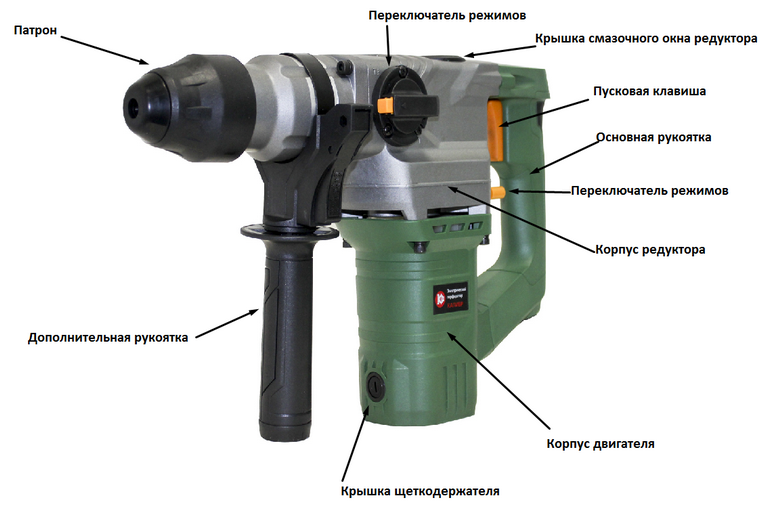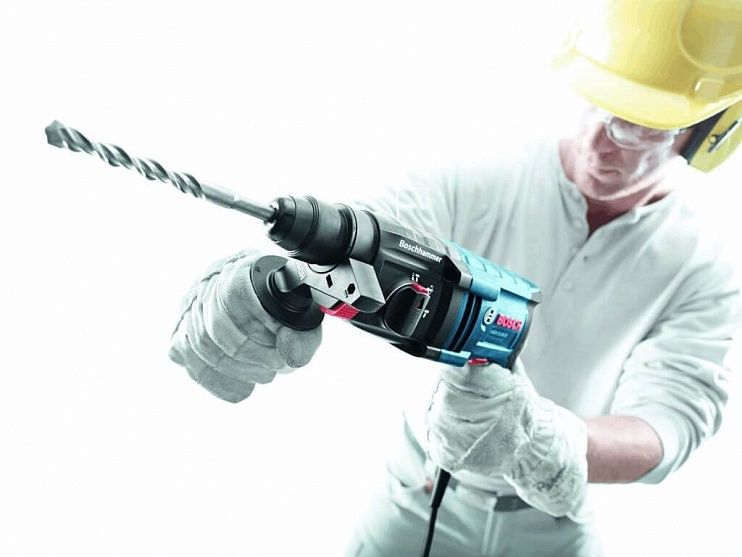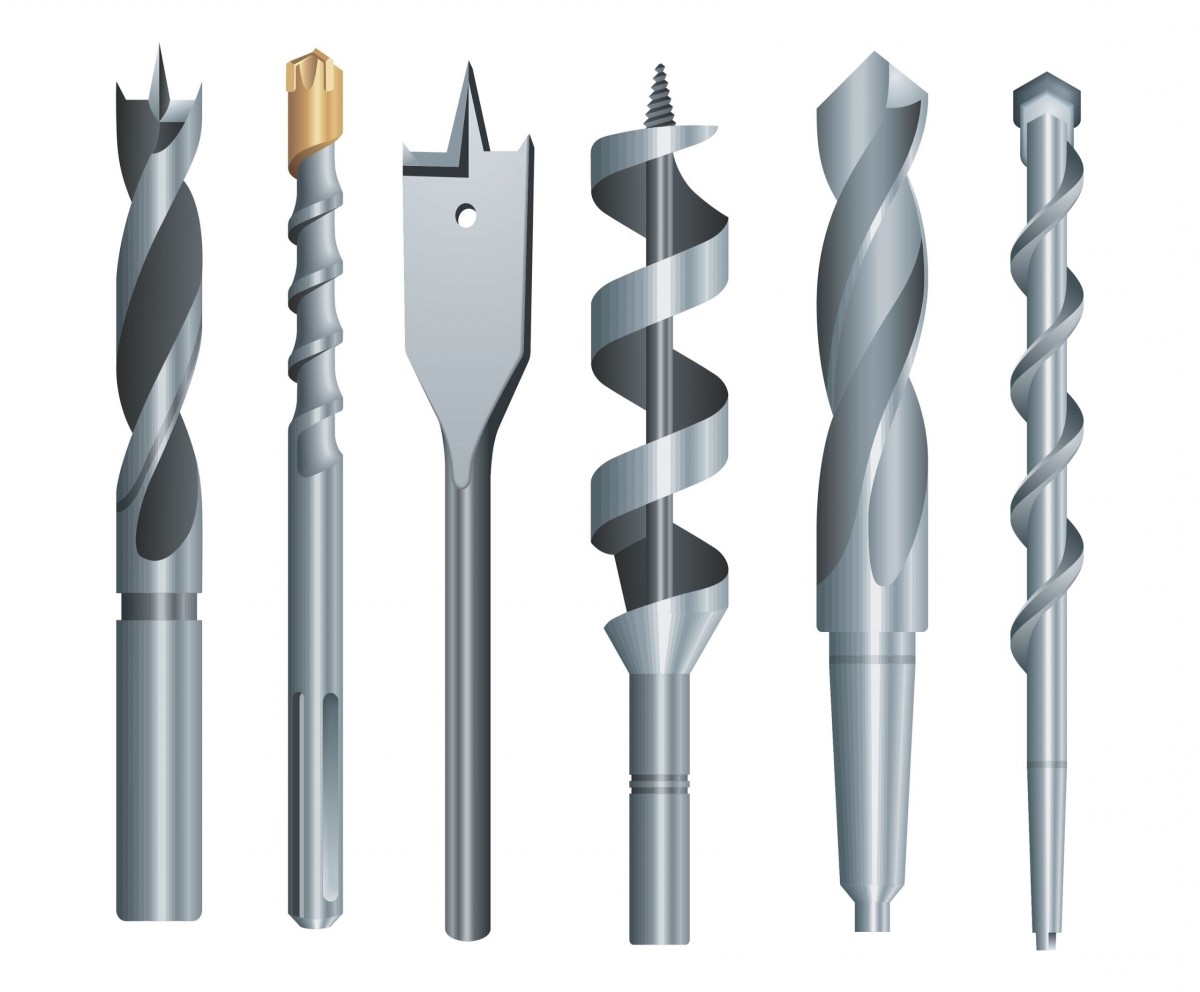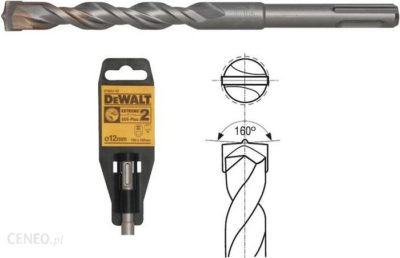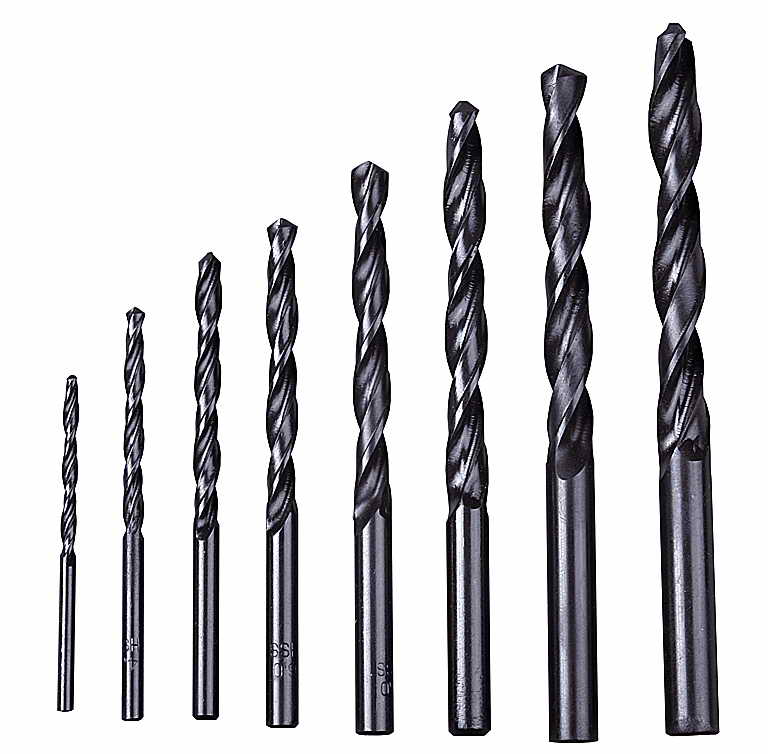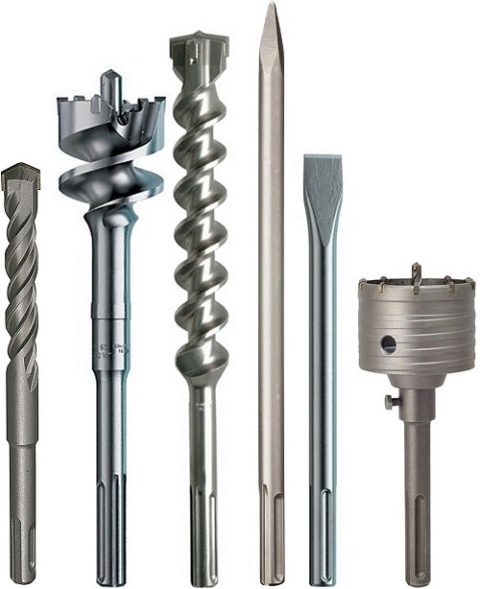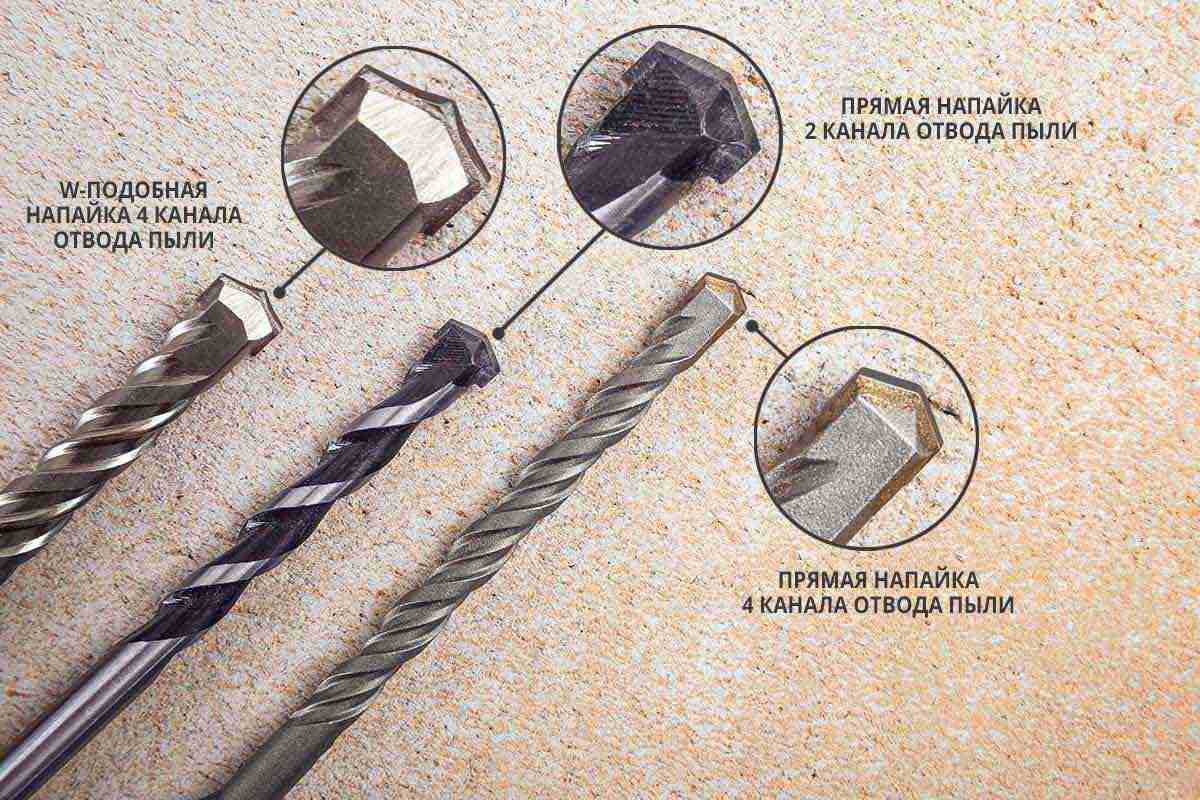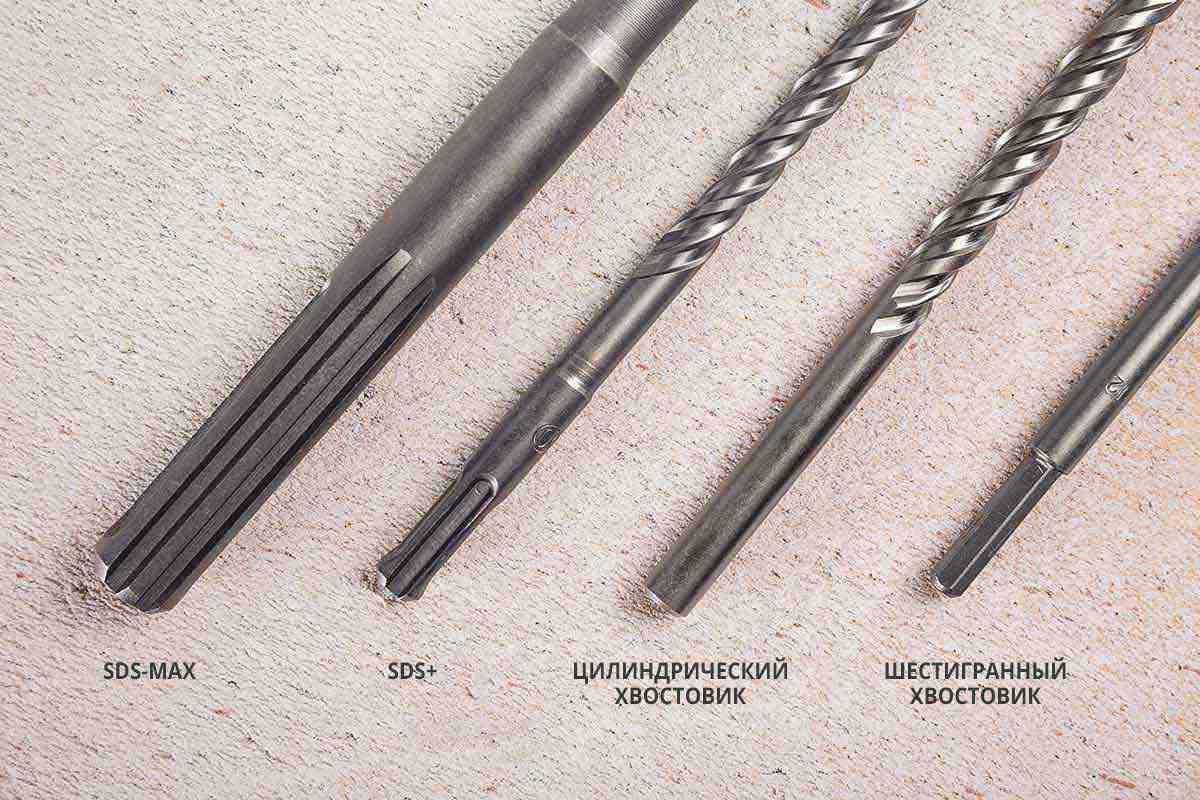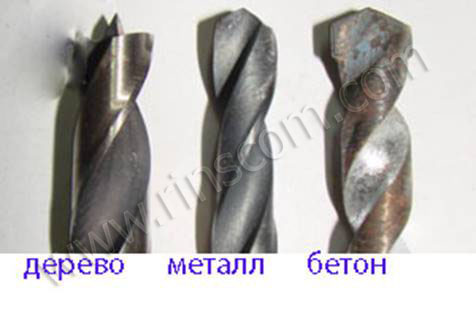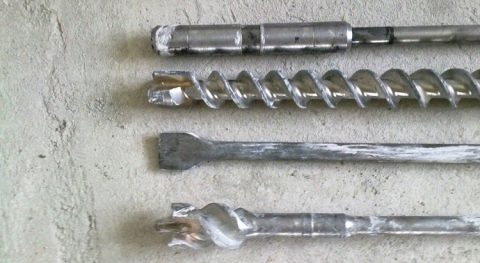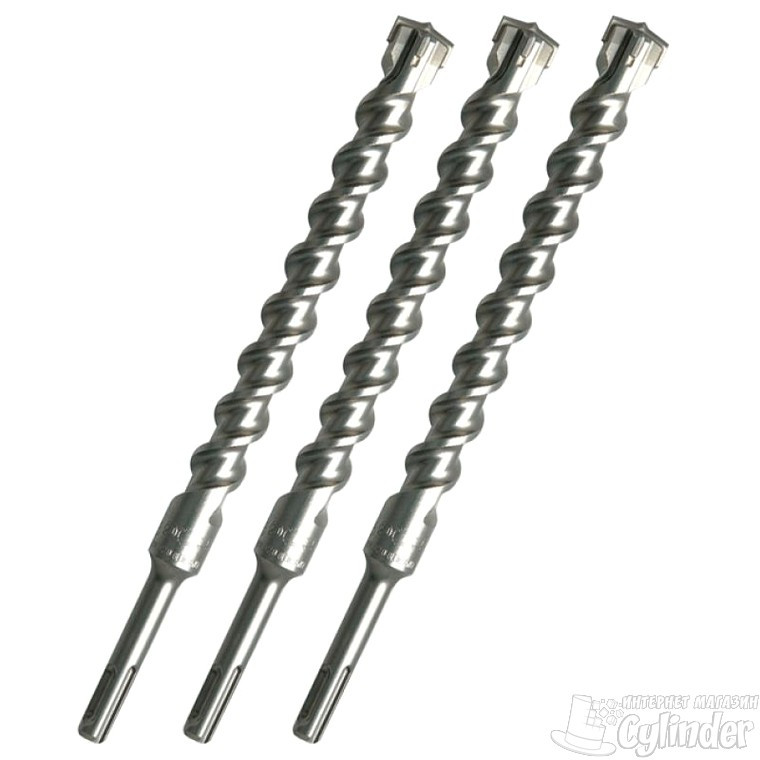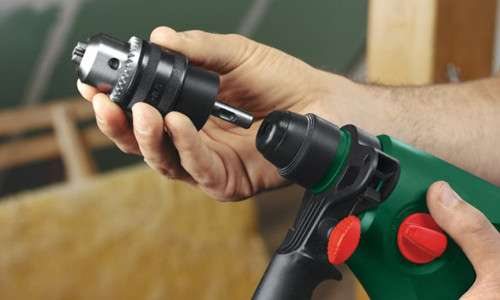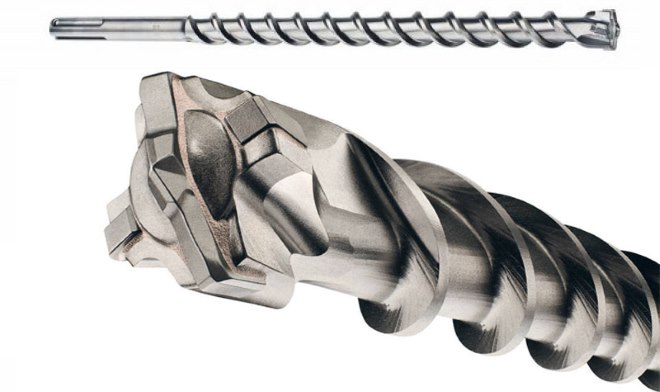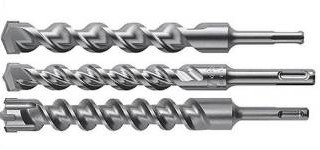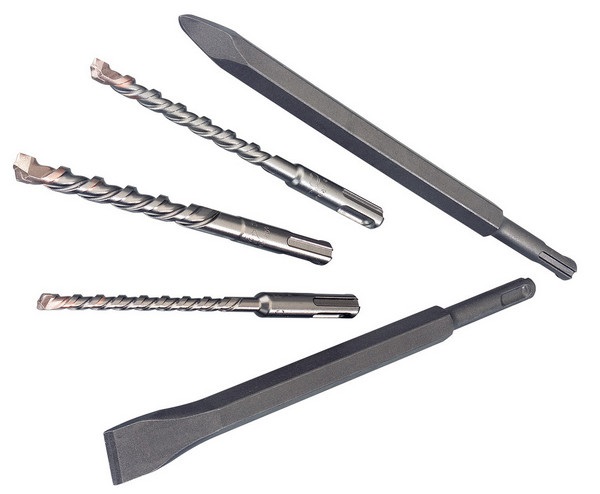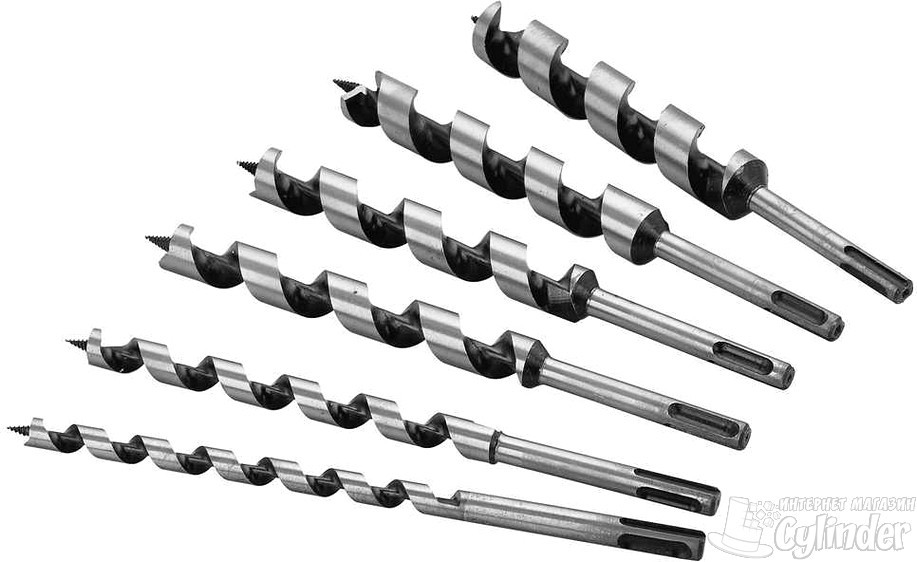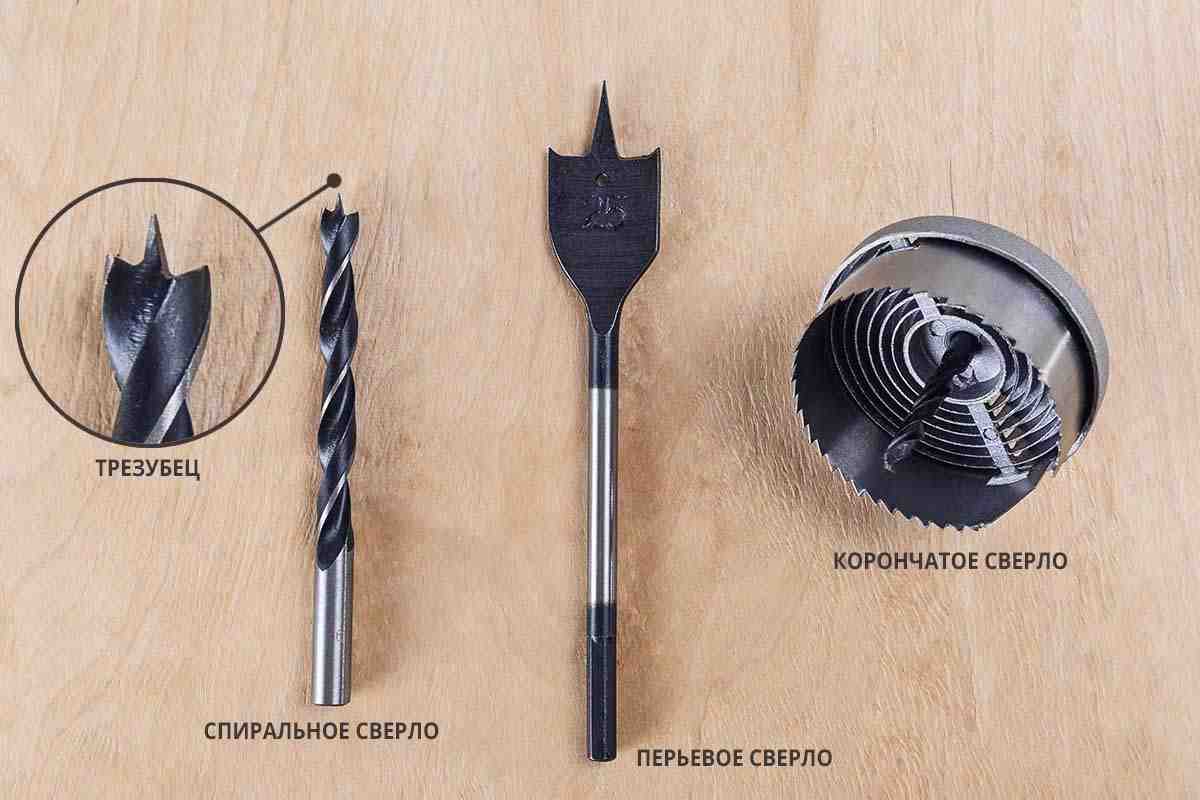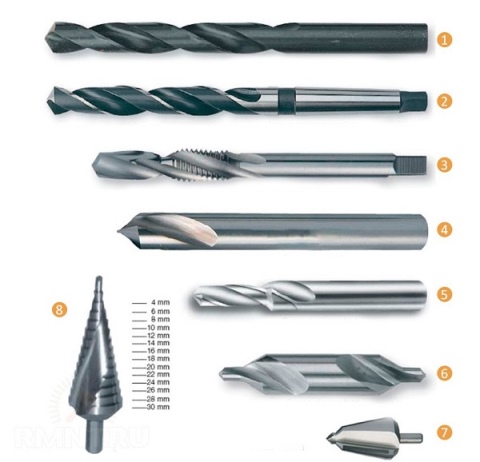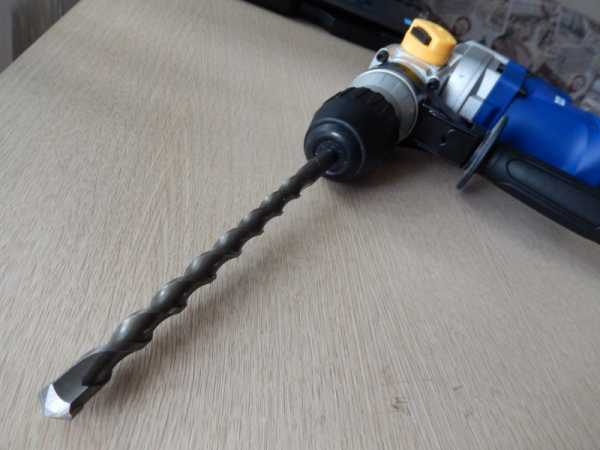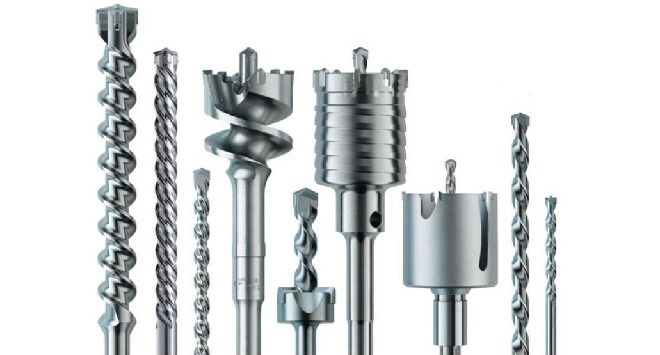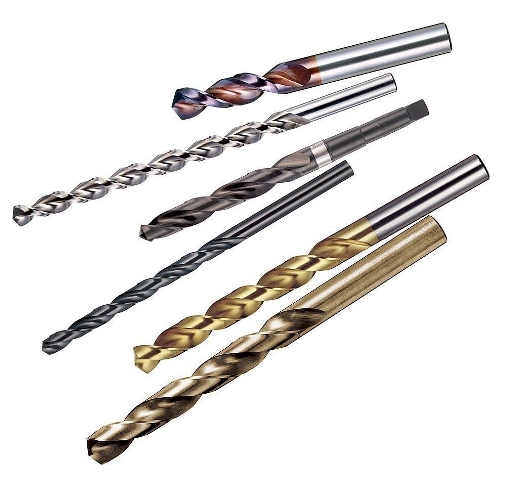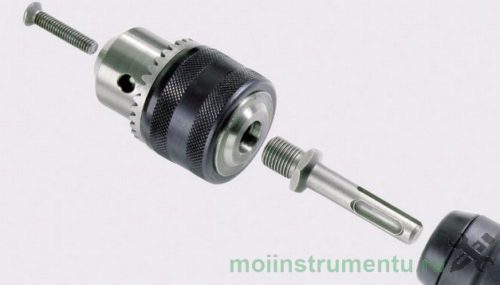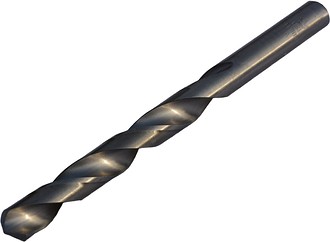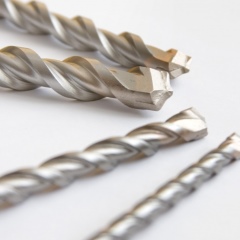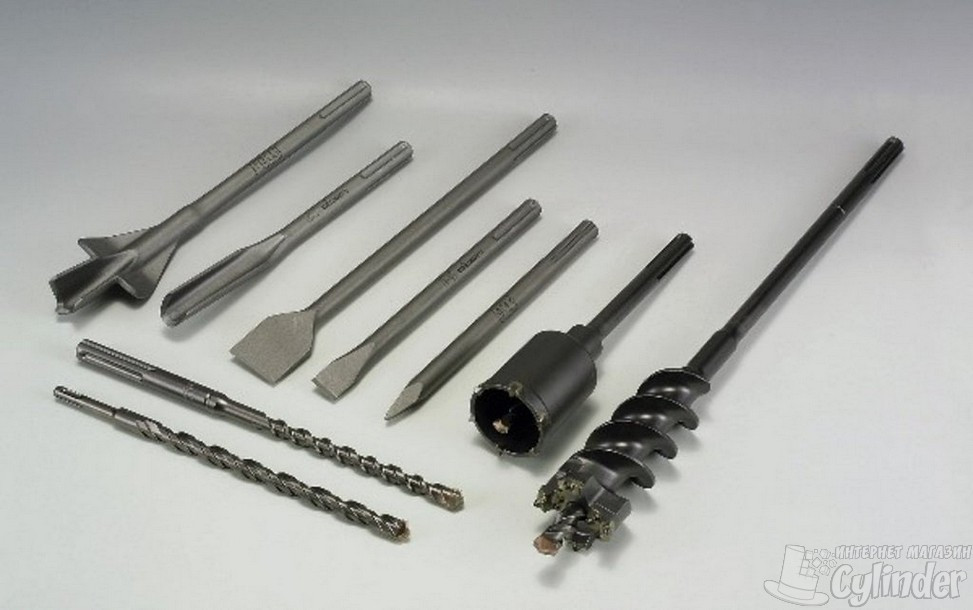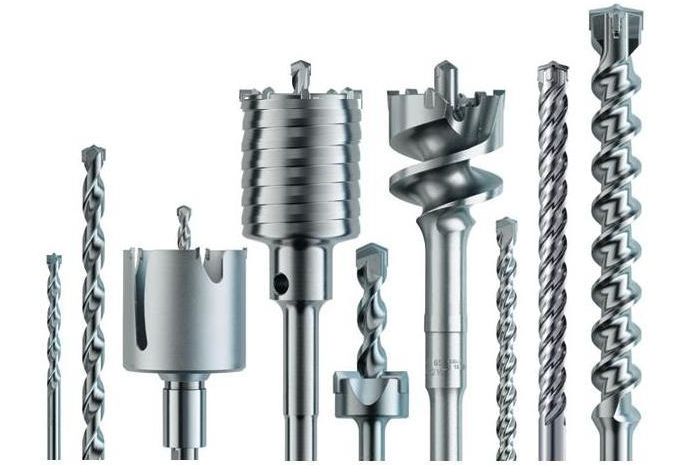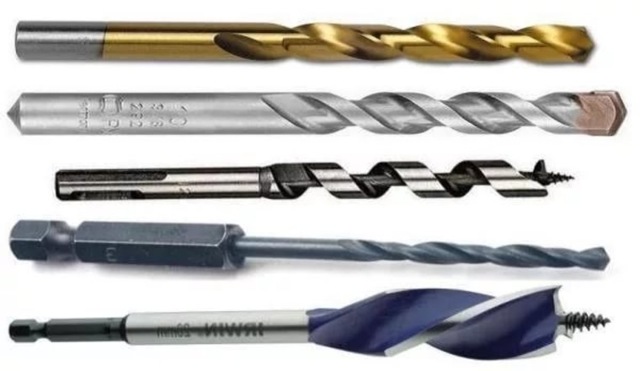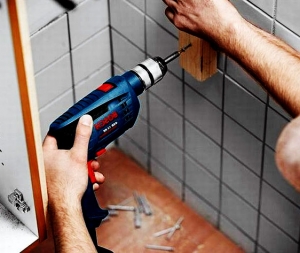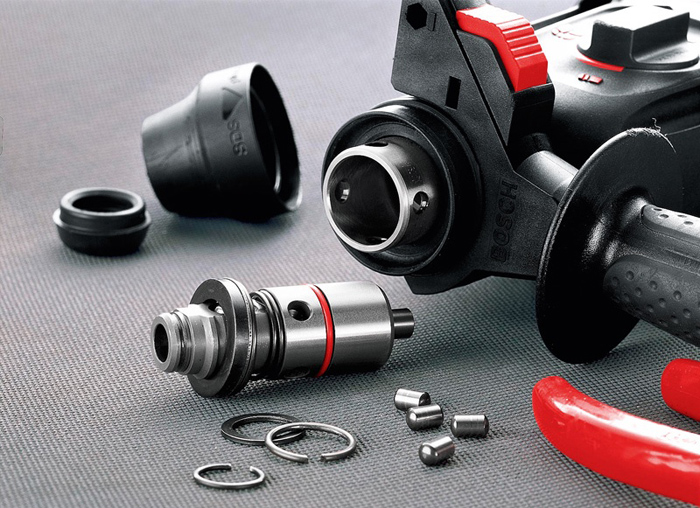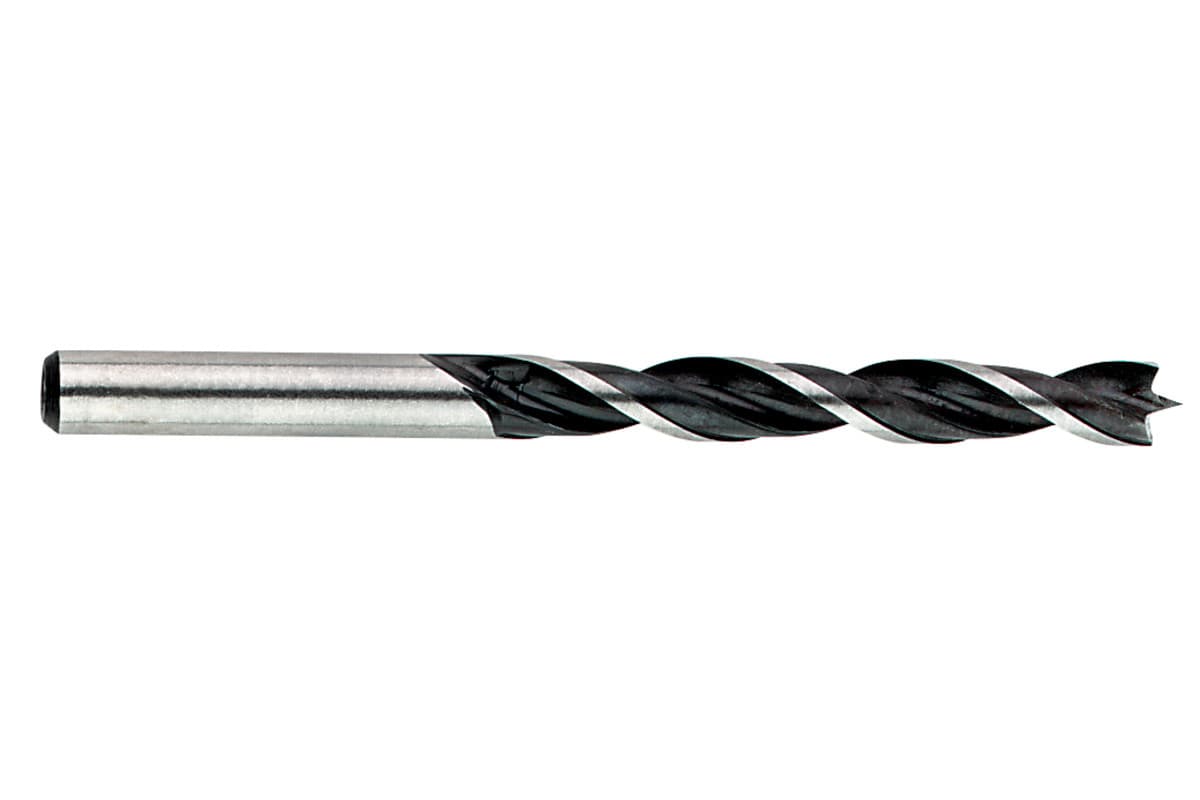How to remove a jammed drill from a hammer drill
There are several simple ways to remove a stuck drill from the hammer drill chuck.
- The free part of the drill, which is stuck in the chuck of the hammer drill, must be clamped in a vice, and then gently tapped on the jaws of the clamping mechanism with a hammer using a wooden washer.
- If the above method of removing the jammed drill does not help, then the chuck can be placed in a container with gasoline, and then try to remove the drill in the usual way.
- If the drill is jammed in the key type chuck, turn the key of such a mechanism counterclockwise, which will free the tool. If necessary, machine oil can be dripped into the key type chuck in which the drill is stuck.
- - To remove a drill that is jammed in the keyless chuck, you can try to loosen the clamping mechanism with a gentle counterclockwise blow.
- The last option for freeing the drill, which is jammed in the hammer drill chuck, is to completely disassemble the fastening mechanism.
How to use?
Before starting work, it is worth making sure that the type of tail of the drill used matches the chuck of the hammer drill. Professional drills recommend SDS-mount drills. This type of retainer allows for easy tool changes. The selected drill must be correctly inserted into the hammer chuck. To perform the procedure correctly, you should adhere to simple recommendations.
- The hammer drill must be disconnected from the power supply before inserting the drill into the chuck. Only after fixing the drill can you start working.
- The hammer drill uses drills that are suitable for the size and model of the equipment. A loose drill bit will damage the surface or hammer drill.
- The tail of the drill must be oiled and cleaned. These actions reduce drill wear and zero damage to the fastening mechanism.
Possible problems
A common problem is that the drill gets stuck in the chuck of the equipment. To extract it, you should choose one of several convenient methods:
- the free end of the drill is clamped in a vice and lightly tapped with a hammer with a rubber gasket on the parts of the clamping mechanism;
- the punch cartridge is placed in a bowl of gasoline and the drill is subsequently removed;
- if the jam has occurred in the key-type clamping mechanism, it is necessary to turn the key counterclockwise or drip machine oil;
- the stuck drill in the keyless chuck is removed by tapping the parts of the chuck counterclockwise;
- complete disassembly of the equipment is possible if none of the methods helped.
For information on how to clamp conventional drills into a hammer drill, see the next video.
Competent selection of drills
The main criterion will be the choice of drill chuck. Depending on the chuck of the hammer drill, the drill is also selected, because another type simply will not work.
After that, it is worth choosing the required size. When choosing a drill, take the size that is slightly smaller than the required hole. This is due to the fact that during the operation of the punch, an error is created that crushes the concrete (and other elements) around the circumference during the drill. The assortment on the market is very large, so it will not be difficult to choose a smaller one.
The third thing to look out for is length. Here it is a matter of the depth of the required hole, and the assortment allows you to find what you need.
Drill tool
The tool costs a lot, but if you need to make several holes for the house, the best option would be to rent a hammer drill and buy a drill.Many amateurs confuse a drill and a hammer drill. The drill has only a rotational function, and the hammer drill also has a bump function.
For the work of victorious drills, it is a perforator that is needed, otherwise there will only be rotation on the surface of the work being performed, which will lead to dismounts and rapid wear.
Of course, you can cope with an ordinary drill, but there will be a lot of trouble. When using a drill, you will need a deep container where you will need to cool the drill, as well as a piece of reinforcement of the required diameter.
Drill to a certain depth, pull out, hammer in the reinforcement and pull it out. And so on until complete drilling. But ordinary drills are not well suited for such work, therefore they quickly overheat and the process of such violence against the instrument lasts quite a lot.
Victory drills for concrete have their drawbacks. It is better to leave metal drilling to a special category of drills, but when the victorious ones bump into metal elements or fittings, they may become unusable.
How to choose?
Rotary hammer drills are divided into models with different coatings.
- Oxide. The appearance of the drills is painted black - this is the cheapest coating. The film covering the drill protects the hammer drill chuck from overheating and rust, increasing the service life.
- Titanium aluminum nitride coating. Allows to increase the service life of drills by 5 times. Reliable and high quality drills.
- Ceramic coating. These drills are not made of pure ceramics, but titanium nitrides. The disadvantage of such a coating is the impossibility of sharpening the nozzle.
- Titanium carbonitride coating. Also increases the service life of the nozzles, has high strength.
- Diamond spraying is intended for work with stone and porcelain stoneware surfaces.
When buying, you should pay special attention to some characteristics.
- Drill ponytail type. It is imperative to take into account the type of tail, otherwise the drill will not be securely fixed in the chuck, which will lead to equipment breakdown. To find out the type of chuck, you can use the instructions that came with the tool. The tails of the hammer drill bits are marked SDS-max and SDS-plus and are made in a more complex shape than drills for drills.
- Manufacturer. Many popular firms produce a whole range of instruments with different pricing policies. Most often, in stores you can find quality products for household needs at quite affordable prices, but it is difficult to find a professional tool.
- Drill length The length of the total or only the working surface can be indicated.
- Head diameter. For work with various materials, drills with the appropriate diameter are used. A hole smaller than the desired size will be difficult to enlarge with a narrow drill. In addition, this will lead to poor-quality work, which will affect the degree of fixation of the fasteners of the installed mechanism.
- Grooves. Drill grooves are different: semicircular, with projections and under bevel. The former are designed for homework that does not require high precision. The last two types are used in large enterprises, due to the ability to quickly remove.
- Tungsten carbide groove. Smooth and smooth surfaces of drills are intended for work with soft materials or external surfaces of bolts, screws. On drills, the geometrical surface of the drill tip is sharper and sometimes of complex shapes - this is due to the impact mode of operation.
How to combine a rotary hammer with a conventional drill
In perforators, a universal cartridge is used, which is used both for drilling and, if necessary, chiselling. It transforms the torque into reciprocating movements or rotation. For this reason hammer chucks under the drill must be able to withstand both the axle load and the torque.
Under certain operating modes, these loads can act simultaneously, therefore, the use of simple collet clamps, like a drill, is unacceptable.
Drill chuck adapter
The drill shank, inserted into the clamp, has a cylindrical or conical shape. It has two pairs of grooves running along the entire length - two open and two closed.
- splined bushing mounted on the motor shaft;
- ring on the sleeve;
- cone spring supporting the ring;
- locking balls located between the sleeve and the ring;
- a shroud that covers the entire assembly.
The drill is fastened when the shank enters the sleeve. In this case, the open grooves coincide with the slots, and the balls supporting the ring enter the hidden holes. As a result, the drill is prevented from falling out of the clamp, the torque is transmitted from the shaft by means of the splines. The shank heel receives impulses from the hammer of the hammer drill.
Varieties of nozzles
The attachments differ from each other in many ways. The most distinctive parameter is the shape of the working part. Drills are:
- Screw. These are the most popular drills that are commonly used on the farm. The length of the instrument varies, but is usually 27.5 centimeters. It can be used to create holes in wood and other surfaces. The spiral diameter can vary from 0.1 millimeters to 7 centimeters.
- A feather drill resembles a feather and is used to drill a large and deep hole. The cutting edge of the tool resembles a spatula in appearance. The drill can be solid, but it can also be fixed by means of a boring bar or a specialized nozzle.
- Single-sided drill. It is used to drill holes with very precise dimensions. The nozzle allows you to cut the surface on one side only. It has a special abutment surface, and the incisal edges are located on one side of the central axis.
- For deep drilling. This is a great option if the hole depth must be more than 5 drill diameters. The nozzle has two specialized channels through which the cooling emulsion is passed. They can be located both inside the drill and outside.
For drills with a diameter exceeding 0.8 millimeters, welding is used. The main part is made from high speed steel, and the carbon type material is used for the shank. The carbide tip is used for drilling holes in very fragile objects and surfaces. Its structure is distinguished by the presence of certain grooves.
Demanded products from Bosch
In the Speed X SDS-max series, all the presented tools have a special design - they are additionally equipped with cutting inserts that are installed at an angle.
Dust extraction channels of the drill allow to evenly distribute the impact force, thanks to the angled spiral section, effective material is effectively removed during drilling.
A drill for concrete for a perforator can be spiral, crown or screw type. The first drills are small in diameter and long, the second have a 4-tooth nozzle, they do not need to be sharpened, and their service life is quite long. The latter are designed for making large holes, their diamond-coated crown is like a glass.
It is up to you to decide which drills are best to choose, make your choice wisely so that the costs are reasonable. If you intend to carry out professional work on concrete, you need to purchase breakaway crowns of a collapsible type.
Types of drills for a hammer drill
Tips are of the following types:
- chisel;
- drill;
- peak or chisel-peak;
- channel drill;
- crown.
A drill, similar to an ordinary twist drill, is used to make round holes, usually for a dowel or dowel-nail.In hardware stores, it is often defined as a drill for a perforator.
The chisel is designed to remove plaster, tile, tile or any other coating that has served its life. It is convenient for them to carry out dismantling, simply by prying the material to be removed.
The lance is convenient to use when chasing, punching holes in concrete or other hard surfaces. The tool has a noticeably larger diameter than that of the drill, and is characterized by increased "bounce". Such a tip is used when it is necessary to make larger holes, which can be achieved using a drill.
A channel drill is indispensable when you need to make grooves for wiring or installing interior items: guides for plasterboard structures, fastening sliding or false walls.
The crown is used for making holes for placing switches and sockets. Modern rotary hammer drills are available in any size, among other things, for the installation of these electrical devices.
- alloyed;
- high-speed;
- carbonaceous.
For the processing of hard materials, the drills are equipped with a heavy-duty brazing.
By the type of the working tip, the drills are classified into the following types:
- Auger, designed for the device of deep holes. Thanks to the spiral design and the high torque, crumbs and dust are removed, the load on the rock drill is reduced, and the turnaround time is shortened.
- A drill with a slight slope of the working chutes. Used for jobs that require little effort, such as making many shallow holes in relatively soft materials.
- A drill with a significant slope of the grooves, characterized by a high drilling speed. The load on the rock drill from such drills is higher than when using augers. Designed for making deep holes.
- Borax with one or more spiral grooves or specially shaped grooves. Such a tip provides high stability of the drill, balance of its rotation, reduction of vibration load on the hammer drill.
No less important is the shape of the rear part of the drill, clamped in the chuck - the shank.
The most commonly used:
- SDSplus. They are used for rotary hammers of low and medium power. Depth into the chuck - 4 mm, tail size - 10 mm.
- SDS is a special guide system. The drill is held in the chuck by clamps. Tail diameter - 10 mm.
- SDSmax. The format used in a powerful professional tool. The shank diameter is not 10, but 18 mm, the recess in the chuck is 9 mm.
- SDStop. Used primarily in BOSH rotary hammers. The tail size is 14 mm.
- SDSquick. It is also a development of the Bosch company and is used in tools of this brand only.
Views
What is a drill and why is it not a drill? For the right choice of tool, it is worth considering what equipment the work will be done with. In essence, a drill and a drill are one and the same:
- drills are used in drills with different functions, creating indentations and holes in various surfaces;
- the drill works with a hammer drill, it is a long drill that is designed for work with hard and dense materials, it is capable of creating deep holes.
Woodworking
Twist drills are used to create a hole in wood surfaces, which can also be used for working with metal. But to achieve a clean and neat recess, drills with a special nozzle and a recess are used. They are constructed from carbon steel or alloy steel and are designed for wood only.
Boers are divided into several types.
- Screw. It has only one spiral and is distinguished by a particularly sharp edge. This shape minimizes the spread of chips during the operation of the hammer drill, allowing you to clearly see the drilling site. The edges of the treated surface are smooth along the entire length.
- Spiral. Designed for work on medium-thick surfaces, for example to create holes for cabinet handles.
- Per'evoy. Designed for shallow depressions (approx. 2 cm).
- Faustner's drill. Designed for fixing holes (for example, hinges for hinged doors). A distinctive feature is the presence of a centering point and a cutter with a sharpened edge.
- Annular. Outwardly, it looks like a crown or glass with corners around the edges. Used for recesses with a diameter of 10 cm or more.
For metal surfaces
These borax have the following characteristics:
- cobalt perforating drill designed for high strength steel;
- soft metals (aluminum, non-ferrous materials) are processed with extra-long twist drills;
- drills with a cylindrical tip made of carbide are considered universal.
For concrete
When equipping a punch with a drill, it is necessary to take into account the material from which the drill is made. Soft and poor quality drills can break when machining high strength concrete.
There are several categories of drills.
- Auger drill. The tip of this drill is equipped with either a nozzle resembling a spatula, or working teeth (most often there are four of them). The nozzle is necessarily hardened, while acquiring a golden hue. Such drills do not require constant sharpening and serve an almost unlimited amount of time.
- Twist drill. These drills are equipped with special grooves that ensure quick removal of material residues and have a length of 8 cm or more. This design allows holes to be created at great depths.
- Core drill. As with all drills of this type, core drills have a large cutting surface diameter. The edges are diamond-coated or hard-alloyed.
Step drills
This category of drills is distinguished by the speed and quality of work. They are designed to work with various materials: wood, plastic, pipes, any soft and hard surfaces. The sharp tip allows you to accurately cut into the workpiece material, and it also eliminates the need for a centering element, which greatly simplifies the work.
A stepped drill replaces the use of angle grinders and file files, does not require manual processing of the ground surface. The conical shape is formed by translational grooves of various diameters, the transition between each section is 30-45 degrees. This drill silhouette effectively handles thin metal. Another feature of this attachment is that it is versatile. Allows to replace a set of drills from a diameter of 4 mm to 50 mm.
Center drills
They are considered professional tools due to their use in industrial plants equipped with milling and turning machines. These drills guarantee complete perpendicularity of the finished hole in relation to the surface of the material, no bevels. When working with wood, such a drill is convenient to create a recess for a countersunk head.

